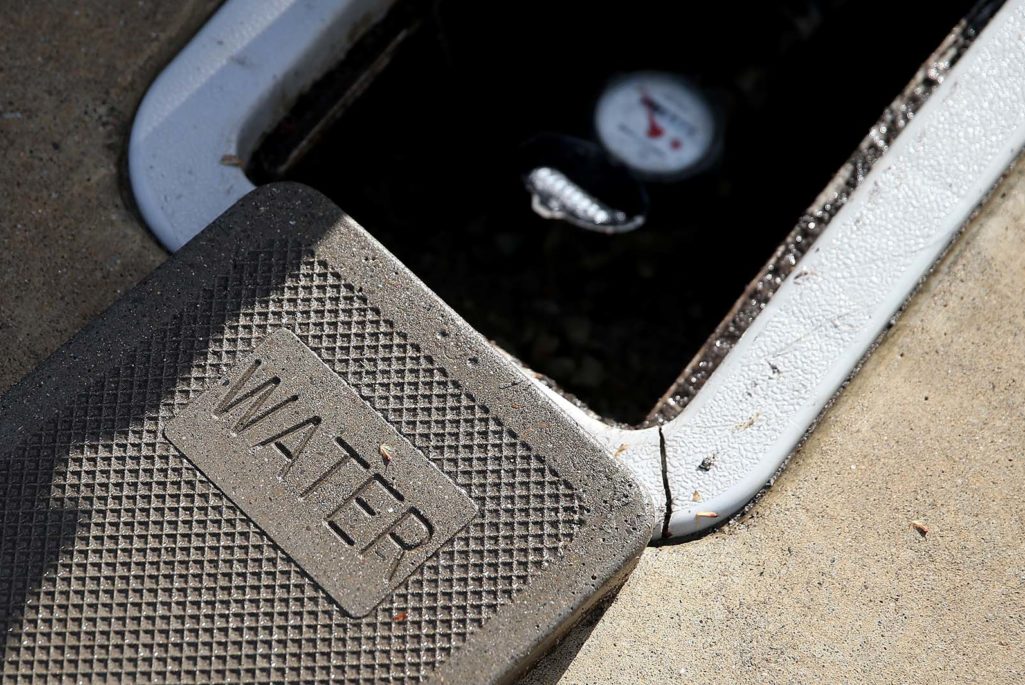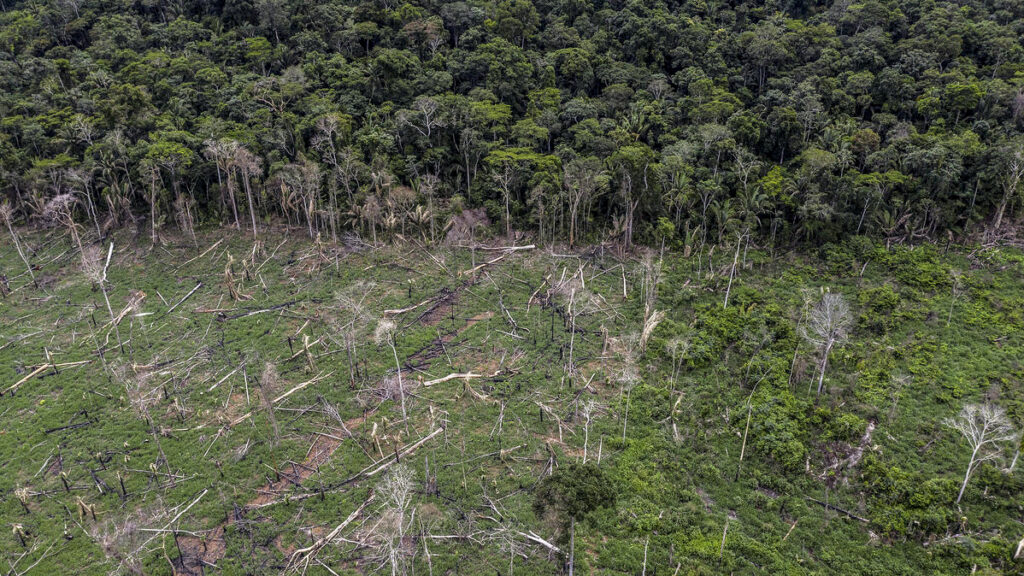Giving Consumers Access to Water Data Promotes Smarter Use

A cover sits next to a water meter on in Walnut Creek, California. As California enters its fourth year of severe drought, water districts throughout the state are assisting customers with finding ways to reduce water use at their homes. California residents are facing a mandatory 25 percent reduction in water use.
Photo: Justin Sullivan/Getty Images
Most consumers do not know how much water they use because they receive such little information on their utility bill. As a result, consumers are unaware how changes in their behaviors or appliances affect their consumption. Better information presents an opportunity for consumers to save money on their water bills while contributing to greater environmental sustainability.
Advances in sensor technology and the introduction of smart meters are creating new ways to capitalize on this opportunity by capturing detailed water data and providing consumers information that can help them understand and manage their individual water usage. Utilities should facilitate this kind of data-driven water conservation by providing consumers access to their water consumption data in a standardized format. A single standard will make it easier to build applications that leverage water data to optimize water conservation.
A single standard would simplify the process of creating services for utilities and consumers, as well as increase the potential market for services, thus incentivizing innovation. For water utilities, a common standard would facilitate data exchange with others in the industry and lead to better industry analysis and forecasting. It would also allow utilities to lower their costs by developing shared data analysis tools.
The State of Water Today
Water usage data comes from water meters, most of which were, until recently, purely analog devices requiring manual reading. Utilities have begun installing more advanced water meters that collect and transmit data electronically. Some utilities have even deployed smart meters, which in addition to providing automatic meter reading, collect more detailed data and provide features such as remote disconnects.
Nationwide, less than 20 percent of the one hundred million metered water customers have smart meters. However, where smart meters have gained a foothold, communities have seen substantial savings. Over the long term, better data from smart meters can help policymakers make better use of limited resources, for example, by prioritizing water efficiency grants for the most effective updates to businesses and homes or by deploying new pricing models that reward efficiency.
The biggest challenge in providing standardized water data is coordination, since there are roughly 52,000 water utilities of varying sizes and types in the United States. Private water companies often operate in multiple jurisdictions and state water regulators oversee these utilities, many requiring different reporting standards.
Better access to water use information presents an opportunity for consumers to save money on their water bills.
How to Create an Industry Standard for Consumer Water Data
The federal government already has a standard that is designed to work with all utility data. The Green Button initiative is a project to provide consumers access to their energy usage data in a standardized format by clicking a uniformly branded green button on their utilities’ websites. The initiative created a standard for reporting and exchanging utility usage data among providers, third-party developers and consumers.
In 2011, the White House challenged electric and gas utilities to adopt a common standard for reporting consumer energy usage. Since then, approximately 3,200 utilities across the United States have adopted the Green Button standard. In total, approximately 60 million homes and businesses have access to Green Button data. Developers have used the Green Button standard to create new digital products and services, including dashboards, mobile applications, and push notifications for peak usage times. A non-profit organization that promotes sustainable energy built an app that lets users estimate their return on investment if they installed solar panels. The water industry can build on the success of the energy industry in providing consumers standardized access to their data.
Although the Green Button standard has been adopted principally by electric and gas utilities, it was designed to work with all utility data. Utilities should therefore make water data available to consumers using the Green Button standard. However, adoption of this standard is not likely to occur quickly without government intervention. The problem is the lack of incentives for individual utilities to adopt the standard unless everyone does.
Giving the Green Light to the ‘Green Button’
To overcome this problem, the White House should convene a summit on water data to encourage stakeholders to adopt the Green Button standard and develop a road map for providing consumers meaningful use of their water utility data. By championing this technology, the White House will be able to bring together stakeholders who might otherwise ignore this opportunity.
In addition, the National Institute of Standards and Technology, in conjunction with the Environmental Protection Agency and the U.S. Department of Housing and Urban Development, should offer a series of grants to spur the development of technologies that would use standardized water data and implementation of the Green Button standard. By funding the initial development of technologies that use the water data, these agencies can help overcome the “chicken or egg” problem: app developers waiting for available data and utilities waiting for data-using apps. Finally, the General Services Administration (GSA) should adopt the Green Button standard for water data in federal buildings, as it has for energy usage, and make any tools it develops to use this data publicly available. By doing so, GSA can provide an initial set of tools to ensure that others in the private sector who manage buildings can benefit from access to water data.
Standardizing consumer water data is the first step to spurring data-driven water conservation. Consumers will be able to gain a better understanding of their water usage if utilities give them access to their data. The Green Button standard is a model program that the federal government should support expanding to water utilities by bringing together stakeholders, funding pilot projects and acting as an early adopter.







